Electric cars have three major problems.
The first problem is range. Most of the models on the market can only go about as far as a non-electric car can on a half-full tank – or about 150-200 miles.
Which brings up the second problem.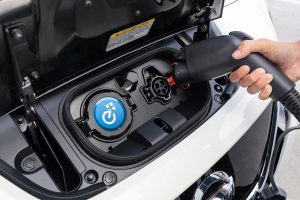
Even the thirstiest gas-powered car can be refueled in just a few minutes, almost anywhere. But all electric cars, regardless of their range, need at least 30-45 minutes to recover a partial charge . . . assuming you can find a high-voltage “fast” charger. If you can’t, the wait will be several hours.
Then there’s the third problem.
Electric cars are very expensive.
But there is one EV that’s less so than the others. . . if you don’t mind short legs.
The Leaf is an electrically powered, compact-sized five-door hatchback – and the only electric car on the market with a base price under $30,000.
Just barely.
Prices start at $29,990 for the base S trim, which can go about 150 miles* on a full charge. More range is available – as much as 226 miles* on a full charge – if you opt for the S Plus trim, which comes with a higher-capacity battery pack.
But it also comes with a much higher price tag – $36,550.
Which puts it into competition with the Chevy Bolt – which stickers for $36,620 to start and comes standard with about 259 miles* of range.
But if you don’t need the longer legs – and prefer the lower price – there’s no other EV on the market right now that goes as far as the Leaf for as little . . . relatively speaking.
What’s New
In addition to more range, the 2019 Leaf also offers some new tech – including an “e-pedal” that lets the driver accelerate and decelerate the vehicle using just one pedal. The operating principle is similar to the way a motorcycle’s roll-on/roll-off throttle control works.
What’s Good
The most “affordable” EV on the road.
Option to go farther down the road.
More room for cargo behind the second row than in the pricier Chevy Bolt.
What’s Not So Good
Less range than a non-electric muscle car with a hole in its tank.
Still costs almost twice as much as a non-electric economy car.
Extra charge for “fast” charge capability.
The Leaf comes standard with a 40 kilowatt-hour electric lithium-ion battery back and electric motor that produce 147 horsepower and 236 ft.-lbs. of torque.
Fully charged up, the Leaf has a range of about 150 miles – hence the asterisk – and can get to 60 in about 8 seconds.
With its optional 62 kilowatt-hour battery pack and stronger electric motor, the output of the Leaf’s electric drivetrain rises to 214 horsepower and 250 ft.-lbs. of torque and its zero to 60 time drops by more than two seconds.
This version of the Leaf is nominally capable of traveling about 226 miles on a full charge.
More on the about follows below.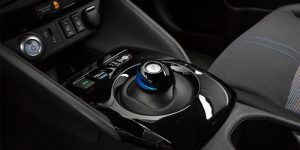
An interesting attribute of both versions of the Leaf – and of all electric cars – is that their maximum torque is produced at zero RPM.
They do not have to be revved to develop torque – it’s produced instantly (very much like a cordless drill). This twist is why EVs are so quick.
Another interesting thing about the Leaf and most if not all EVs is that there’s no transmission. The electric motor is connected directly to the powered wheels (the front wheels, in the case of the Leaf) eliminating both shifts and parasitic power losses between the motor that provides the power and the wheels that propel the car.
Movement without sound or any sensations of mechanical things happening takes a little getting used to but once your senses adjust, driving the Leaf is more or less like driving a non-electric car economy car.
Better, in some ways.
Acceleration is instantaneous because of the immediate power delivery from the electric motor to the wheels. The engine doesn’t have to rev – because there is no engine. There is a motor that spins.
And there no gears to shift through – because there aren’t any.
You just go.
But, you have to be conscious of how far you’ve gone – and how far you can still go – because of the time it takes to recharge. If you forget to gas up a non-electric car and run empty, you can refuel in moments and be back on your way. It doesn’t require planning so you don’t have to think about it much.
Even if you actually run out of gas, it’s still only a minor hassle because gas is transportable. You can bring a gallon to the car – and be back on the road.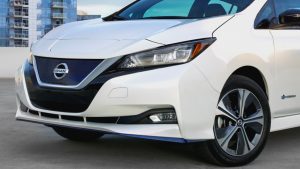
If you forget to charge up your EV and run out of range, you’ll be stuck. It is not possible to bring a few kilowatts in a jerry can to the EV. You will have to tow the EV to the source of the kilowatts.
Which brings up the about (and asterisk stuff).
Whatever range is advertised by an electric car, it’s actual range in the real world can and will vary. This is also true for non-electric cars, but not to the same degree. If you constantly floor the gas pedal, drive it fast, a gas-powered car will need more gas sooner. But not as soon as an electric car will need to be charged if driven in the same manner.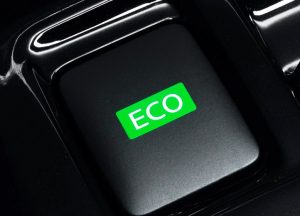
It is almost impossible to halve the advertised MPGs (and so, the range) of any non-electric car – without pulling spark plug wires or putting holes in the gas tank.
But it is easy to halve the range of an electric car.
You don’t even have to drive it for that to happen, either.
If it gets very cold, the range can decline by 30-40 percent due to the effect of the cold on the battery as well as the need to use high-draw electrically-powered accessories such as the heater – for you and the battery. Which must be kept warm when it is very cold out – just like you.
High-speed driving and uphill driving are also range-killers. I watched the Leaf’s indicated range tick down as I drove up the mountain pass to my home. By the time I got home, I had used up 52 miles of indicated range to travel 20 actual miles.
Now, it is perfectly true that this disadvantage going up becomes an advantage going down. The Leaf used up almost no range going back down the mountain and actually gained some range by recovering charge through regenerative braking – the use of downhill momentum to power an internal generator that feeds current back into the battery pack.
All good – if you’re going back into town. But when I got home from town – after the power-sapping haul up the mountain – the Leaf had very little range left, which meant a wait before I could use it to go anywhere else.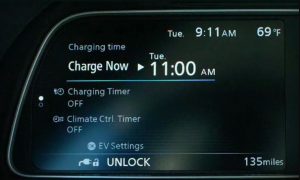
This is okay, I suppose, if you are home for the day and don’t need to go anywhere for awhile. In the Leaf’s case, for several hours – because it does not come standard with “fast” charge capability and so can only be recharged using standard household outlets.
Which takes several hours. Six to eight hours to fully recharge.
What happens if you need to go somewhere before then?
Range also dips on the highway – which is the opposite of the case with non-electric cars, which get their best mileage (and deliver maximum range) on the highway. Stop-and-go driving is murder on MPGs.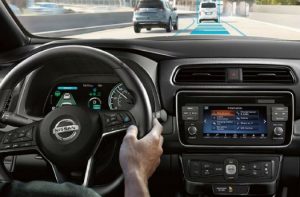
But it’s easy on EVs.
An EV uses little or even no energy when it is not moving – or moving slowly. You’ll get the most range out of the Leaf – out of any EV – in city driving. That’s the sort of driving EVs are most suited to.
However, there is a major problem there. Not with the car, per se. But with charging it.
Most people who live in cities don’t have garages. Where to plug in? Run an extension cord to the street from the fifth floor? Not very practical.
Parking is also at a premium in the city. There may be more “fast” chargers there than in suburbia. But someone else probably got there first. If you’re low on charge, what do you do?
And what do you do when it snows?
The Leaf is similar in general appearance and layout to its main rial, the Chevy Bolt – but it’s not as space-efficient.
Though it is almost a foot longer overall (176.4 inches vs. 164 inches for the Chevy) it has significantly less backseat legroom (33.3 inches vs. 36.5 inches) and only 30 cubic feet of total cargo capacity vs. nearly twice that (56.6 cubic feet) in the Bolt.
However, that ‘s still easily twice the capacity of any current mid-sized sedan, which explains the popularity of the hatchback layout – electrically powered or not. And it’s still compact enough to be very easy to maneuver in close quarters, which is made easier by its very tight turning circle and finger-light electrically powered steering.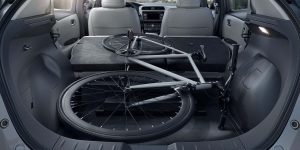
Visibility to the side is very good – but the sexed-up restyle and now very steep rake of the windshield and Maxima-esque jutting front end treatment have decreased forward visibility relative to the previous, homelier – but more practical in terms of its shape – first generation Leaf.
The current Leaf’s main “sell,” though, is its much lower cost to start vs. the Bolt.
However, if you want the ability to “fast” charge (30-45 minutes vs several hours) you’ll have to upgrade to the SV, which starts at $32,600 – a big jump in price from the base S trim’s just under-$30k base price.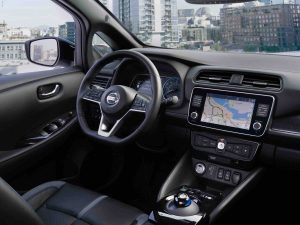
You will, however, also get a much nicer six-speaker stereo in place of the base S trim’s four-speaker basic system, a larger ( 7 inch vs. 5 inch) touchscreen, leather trim and adaptive cruise control.
An All-Weather package is available that adds heaters for almost everything, exterior mirrors, the steering wheel and seats – as well as a supplementary cabin heat pump, to warm up the car faster. Keep in mind that all of these heaters use power – which means charge.
Which means a reduction in range.
The top-of-the-line SL Leaf is gets a 360 degree parking camera system, leather seats and a seven speaker Bose premium audio system.
A couple of other things to know about the Leaf specifically and electric cars generally.
First, there is an additional cost not advertised on the window sticker of every EV. It is the cost of having your home wired up for “fast” charging. Which you’ll want to do unless you want to wait for hours to recharge.
“Fast” charging will cost you about $1,000 – for the parts and the electrician. You will also need a garage. If you lack one, you will not be able to “fast” charge unless you can plug into one that’s available where you live or nearby.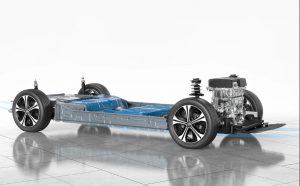
Another cost – potentially – is the replacement cost of the battery, which is the key functional component of the EV.
Nissan warrants the Leaf’s battery for eight years or 100,000 miles – but that’s not very long relative to the lifespan of a non-electric car, which can generally be counted on to not require the replacement of a major component such as its engine or transmission for at least 12-15 years and usually at least 150,000 miles.
Nissan also adds a caveat to its warranty coverage. The battery is warranted for eight years or 100,000 miles “against excessive capacity loss.” Who gets to decide what “excessive” loss means, exactly?
Keep in mind that batteries – whether AA in your flashlight or lithium-ion in your EV – gradually lose their capacity to accept/hold charge over time. Which means – in the case of an EV – that the car’s range declines over time.
This is just chemistry. But it’s one thing to have to buy a new set of $3 AA batteries for your flashlight. It is another thing to have to buy a new $5,000 battery pack at 110,000 miles because it only holds half the charge it did when new and your 150 mile* Leaf is now a 75 mile Leaf (and on its way to being a no-miles Leaf).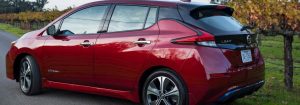
Is “excessive” loss 20 percent of original capacity? Or 50 percent? How much range loss are you willing to accept – if Nissan will not pay to replace the Leaf’s tiring battery?
The Bottom Line
The Leaf costs less than other EVs. But it still costs too much.
And not just up front.
. . .
Got a question about cars, Libertarian politics – or anything else? Click on the “ask Eric” link and send ’em in!
If you like what you’ve found here please consider supporting EPautos.
We depend on you to keep the wheels turning!
Our donate button is here.
If you prefer not to use PayPal, our mailing address is:
EPautos
721 Hummingbird Lane SE
Copper Hill, VA 24079
PS: Get an EPautos magnet (pictured below) in return for a $20 or more one-time donation or a $10 or more monthly recurring donation. (Please be sure to tell us you want a sticker – and also, provide an address, so we know where to mail the thing!)
My latest eBook is also available for your favorite price – free! Click here. 


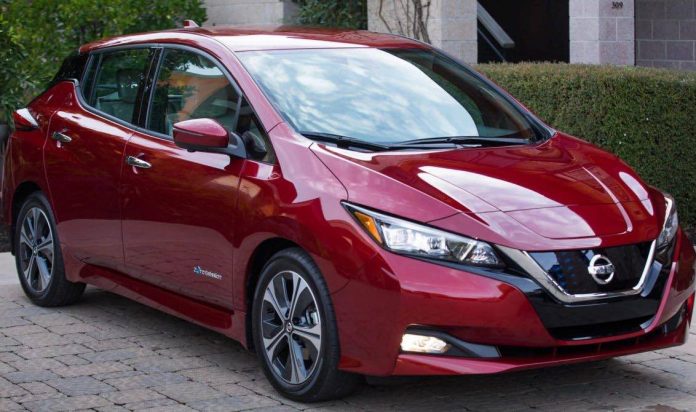

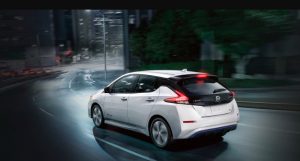
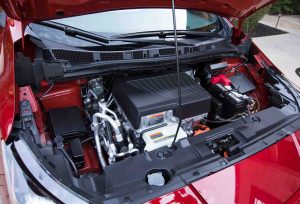
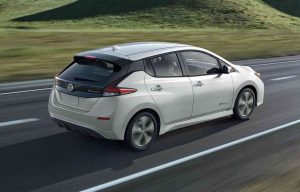
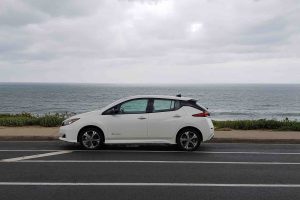
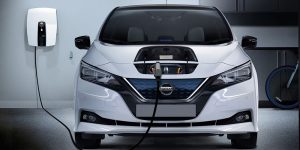








The Leaf. Nothing that a Versa gas engine and a Hyundai 6 speed automatic [no CVT ever] wouldn’t fix just fine.
Hi Bostwick,
Yup. Having to write about these EVs is literally killing me. Well, killing my spirit; my desire to write. If I had the money to burn, I’d buy an EV . . . just so I could pelt it with .50 cal rounds!
Save your pennies! Plenty of batteries and not worth fixing electronics on them that are on a countdown to economic death. Imagine the used price of a Tesla when they a)hold little charge, b)have a time bomb memory chip near death c)have superior competition from the big guys, d)are not the ‘cool’ thing anymore.
I figure bricked ones for a few grand in the not too distant future. Call up Ted Nugent and tell him your plan. I’ll bet he would let you use his SAW. Not sure if he has a .50 cal.
Hi Anon,
I will do so! Also, I have friends with Fifties… and other things, too!
Need something like the old Smart EV.
It was overpriced but my brother-in-law used car dealer picked one up for a song…his wife loved it as an around-town commuter car until he sold it for twice what he paid.
Easily recharged overnight via a 120VAC extension cord…no need for a 240VAC charger.
Couldnt help but read this and laugh…. in Commie-fornia even the solar panels only work when a central authority allows them to work!!! Defeating the actual purpose of solar panels!!!
https://news.bloombergenvironment.com/environment-and-energy/californians-learning-that-solar-panels-dont-work-in-blackouts
Wow. Looked locally in BC.
MSRP $12,200cad for a base Micra. Not available in the USA as far as I know. Why?
MSRP $30,000cad for an AWD Sentra or $2000 more for a 370Z.
MSRP ~$40,000cad for a base Leaf…..OR a Maxima.
Someone let me know when I can have a Leaf with the same abilities as the Micra, for the same price as a Micra. Until then, $28k in my pocket and unlimited range with five minute stops and no range anxiety seems the sane choice. Even the 370Z makes more sense, resale, fun and $8k in pocket wise.
the other day called an uber and got one of these things. Asked the guy about it – he started with how brilliant it was and how cheap it was. BUt then he went on to what a pain it was to re-charge it, find a point, wait, and if its not empty wait even more!!! His view as (as with most people in Europe) that the “government” should do more to ensure that there are more charge points!!… furthermore I found out that he only GOT the car because it was leased to him basically at a subsidised rate by a company whos sole purpose is to milk government green subsidies….
Which basically sums up the whole con around these things……
Hi Nasir!
Do you remember the old Arnold movie, Total Recall? He puts on a costume to make him look like Mrs. Doubtfire and – when caught – the costume falls apart and “she” says: Get ready for a surprise!
EV people are in for several.
Including what electricity is going to cost them once they can’t go back to gas. There will be new and usurious taxes – including “carbon” taxes.
Wait and see!
Not just EV people. Everyone on the grid as supply and demand will make electricity prices skyrocket if EVs really take over.
The instant gratification, zero forethought, credulous crowd are incapable of grasping that incentives are just bait and switch. Get everyone to switch to EVs, crush the ICEs, crank up the price of electricity for everything, car or not, and raise road use fees ‘justified’ by the loss of gas tax revenue.
Which is WHY I never understand why an EV, as opposed to a hybrid, is being pushed as general-purpose transportation. They DO have applications, for, say, if someone just needs a BASIC car, not a gussied-up $80K Tesla, for the daily commute or running errands about town, and has another ride with more conventional propulsion, or, for FLEETS with again, a daily need which is usually met with ONE charge. The market would, if left alone, determine the requirement for EVs.
Agree completely Eric.
Another interesting thing – not sure how many saw, but James Dyson, perhaps one of the greatest designers and engineers of this generation in Britain (maybe even our Jobs) has abandoned his electric car ! This is a guy who’s revolutionised the electric motor, and has the best batteries in the consumer market. Why did he abandon – because he realised after years of trying that it will never be commercially viable!! (or he just couldn’t stomach ruining his legacy by twisting his business to essentially just farming subsidies)….
https://www.theverge.com/2019/10/10/20908117/dyson-electric-car-ev-project
Great point regarding the insane push towards complete electrification. We’ll be left with a single, government-controlled source of energy. What could go wrong?
Thanks, Keith!
I tried to go easy on the car… not mentioning the fact that even the “affordable” version costs literally twice as much as Nissan’s own Versa Note, which can travel twice as far before refueling – which it can do anywhere in less than 5 minutes.
The Versa also has a likely useful – functional and economic – service life of close to 20 years. How long will the Leaf last? Probably not even ten.
Back in 2015, my Old forerunner got hail damage, and the insurance company totaled it. Should’ve taken the salvage money and kept it, but I didn’t. Since my job entailed working at home, around town, or going to the airport, I downsized to a 2012 nissan versa. It had the bigger engine (so to speak), fully loaded, 25K on the clock, and only 3 years old. I dropped 10K on it.
Was a great car. A bit slow, but did what I needed to do. Even had enough space for my amp, guitars and bass.
I wound up getting a gig working on a network at a site out in the country – about 1.5 hours away. I’d have to tool out there a day or two at a time. No sweat. Loaded my gear and went. Did the jobs, made money.
I”d have been screwed had I bought an EV. It would cripple any opportunity I’d have not within a 50 mile radius, and I probably wouldn’t be able to stuff as much tools, parts, and gear in it.
You can make do with a small hatch. You can’t make do with small range. Not where I live (in Texas)
https://www.bloomberg.com/news/articles/2019-10-09/pg-e-to-start-second-phase-of-shutoffs-later-than-planned?srnd=premium
..
The company was scheduled to shut service to another 234,000 customers in cities including Berkeley and Oakland at noon local time, but told city and county officials that those cutoffs will instead start Wednesday evening.
..
Unfortunately for customers, PG&E won’t be able to switch the power back on once the winds stop. Crews must inspect every inch of lines to ensure they’re safe to carry electricity again. Cities have warned residents to brace for six days without power.
..
EV owners beware. Stock up on a few emergency tanks of electrons.
Actually, never mind just EVs, freezer, fridge and electric cooker owners beware too.
If they shut down power overnight in Oakland and Berkeley, they will have bigger problems than just their little electro-karts going dead.
Well, in the East Bay, there’s been such mixing among the various denizens that most of them are too lazy to steal if the light go out.
California is truly a gift that keeps on giving.
PG&E is deathly afraid, with the high winds and fire danger prevalent in NorCal this time of year, that another round of gusts could cause another Camp Fire like what took out the ironically-named town of PARADISE last year.
The trouble with suing the utility for “negligence”, if indeed it actually exists, is that it only hits the taxpayers in a roundabout way. Utilities like PG&E and SoCal Edison are heavily invested in by state employee and teachers retirement plans, hence why the California “PUC” (Public Utilities Commission). Ostensibly to regulate on behalf of the “consumer interest”, it’s REAL job is to make sure the dividends keep flowing into the public employee pension plans.
This is scandalous. I cannot believe people will tolerate this.
BTW, the inevitable result of this mismanagement will be big-ass-diesel generators.
Many of the data centers I visit have not one, but two locomotive size generators.
So much for Climate Change.
Wouldn’t it have been easier to simply maintain the infrastructure?
I understand the Leaf does not have a thermal management system for its battery to prevent the battery overheating and thus degrading even faster.
So Eric, how did they get this car to you out in the woods? Flatbed truck?
Local dealer is selling leftover brand new 2018 Ford Focus sedans for $14,500. Hard to compete against that. Plus it will go 500 miles on a tank of gas, and refill in five minutes.
All these electric cars are smaller sedans (aka not a crossover or suv) which don’t sell well even when powered with gasoline.
With the same “cluster(fool)” dual-clutch transmission? Then you’re paying $14,501 too much!
30k?! You can get a lot of sedan or hatch for that price. Over priced toy for now.
For half that you can get an astonishingly nice car, 3-4 years old, coming off a lease. Huge number of choices.
I generally buy lightly used, spend a fraction of that number, and drive really nice cars.
“Another interesting thing about the Leaf and most if not all EVs is that there’s no transmission.”
At last….a Nissan without CVT! 🙂
Nissan’s linkedin page gets a daily barrage of CVT jokes, me included.
Sells better than Tesla, not much hype for it, affordable.
Where are the EV fan-bois’ for the Nissan Leaf? Say what you want about marketing and all, but market likes the Leaf for EV usage.
Can’t do your virtue signaling in a Nissan I suppose.